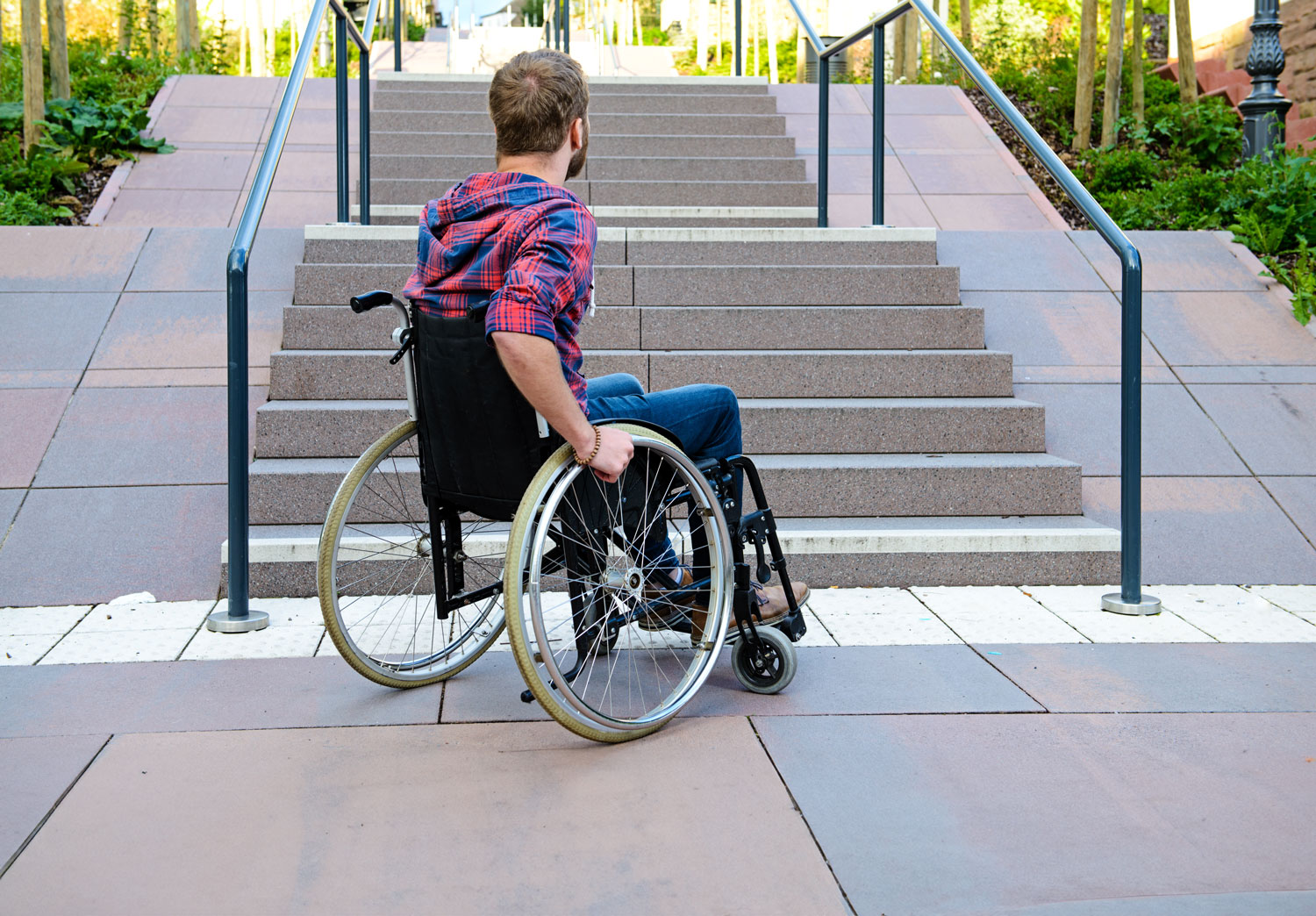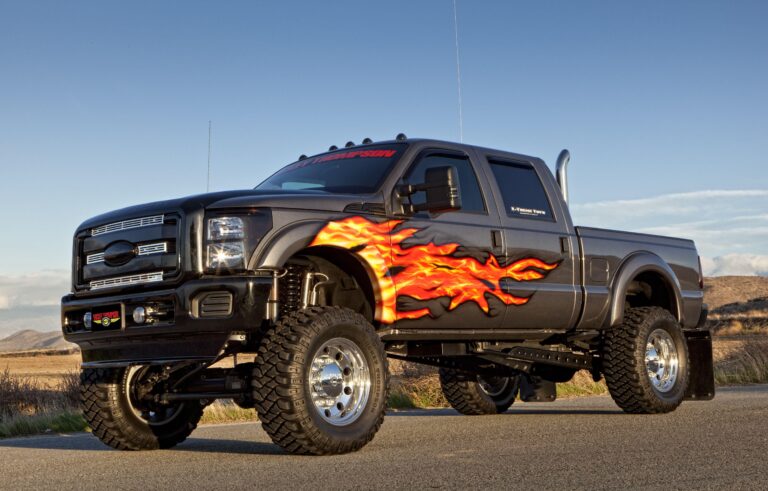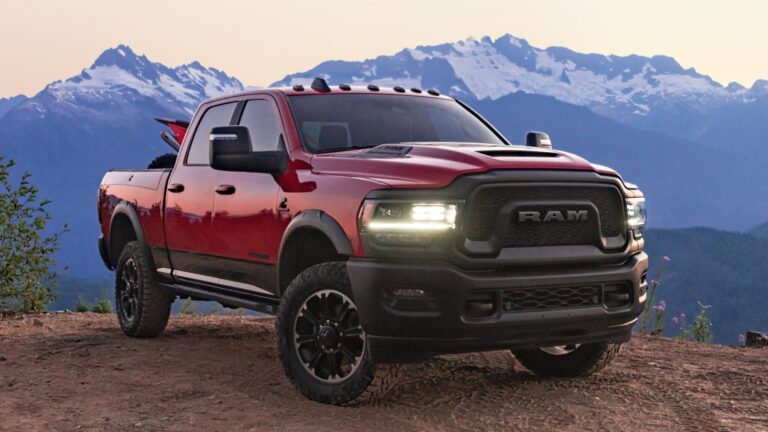Handicap Trucks For Sale Near Me: Your Comprehensive Guide to Accessible Mobility
Handicap Trucks For Sale Near Me: Your Comprehensive Guide to Accessible Mobility cars.truckstrend.com
For many individuals living with disabilities, a standard vehicle simply isn’t an option. The freedom to travel, access healthcare, pursue employment, or simply visit loved ones often hinges on having reliable, accessible transportation. This is where handicap trucks – more accurately known as mobility-modified vehicles, accessible vans, or wheelchair-accessible vehicles (WAVs) – become indispensable. These specially adapted vehicles are designed to accommodate wheelchairs, scooters, and other mobility aids, empowering their users with unprecedented independence and improved quality of life.
The journey to finding the right handicap truck can seem daunting, especially when the goal is to find one "near me." This comprehensive guide aims to demystify the process, offering practical advice, detailing various options, and providing actionable insights to help you navigate the market for handicap trucks for sale, ultimately connecting you with the perfect vehicle that meets your unique needs and brings the world closer to your doorstep.
Handicap Trucks For Sale Near Me: Your Comprehensive Guide to Accessible Mobility
Understanding Handicap Trucks: More Than Just a Vehicle
At its core, a handicap truck (or WAV) is a vehicle that has been professionally modified to allow individuals using wheelchairs or other mobility devices to enter, exit, and travel safely. While the term "truck" might conjure images of pickups, the most common base vehicles are full-size vans or minivans, due to their spacious interiors and ease of conversion. However, adaptations are increasingly available for SUVs and even some pickup trucks, broadening the spectrum of choices.
Key features that define these vehicles include:
- Wheelchair Ramps: Manual or power-operated ramps that deploy from the side or rear of the vehicle, allowing easy entry and exit.
- Wheelchair Lifts: Hydraulic or electric lifts that raise and lower a wheelchair user into and out of the vehicle, particularly common in larger vans or for heavier power wheelchairs.
- Tie-Down Systems: Securement devices (retractable belts or docking systems) that firmly hold the wheelchair in place during transit, ensuring safety.
- Restraints: Seatbelts and shoulder harnesses designed to secure the wheelchair user.
- Lowered Floors/Raised Roofs: Modifications that create additional interior height and space for wheelchair maneuverability.
- Adaptive Driving Controls: Hand controls for acceleration and braking, spinner knobs for steering, reduced effort steering/braking, and various electronic driving aids for individuals who drive from their wheelchair or with limited mobility.
- Transfer Seats: Swivel or power seats that assist individuals in transferring from their wheelchair into the driver’s or passenger seat.

These modifications transform a standard vehicle into a lifeline, offering not just transportation, but a gateway to greater freedom, social engagement, and personal autonomy.

The Search Begins: Finding Handicap Trucks For Sale Near Me
Locating a suitable handicap truck involves exploring various avenues. The "near me" aspect often refers to finding a dealer or seller within a reasonable driving distance, allowing for inspections and test drives.
1. Local Dealerships & Mobility Specialists
- Pros: These are often the most reliable sources. Dedicated mobility dealerships specialize in WAVs, offering a wide range of new and used vehicles, professional sales staff, certified technicians for maintenance and repairs, and often assistance with financing and grants. They can provide expert advice on different conversion types and ensure modifications meet safety standards.
- Cons: Prices can be higher than private sales. Inventory might be limited depending on your specific needs.
- Actionable Tip: Search online for "wheelchair accessible vehicle dealers near me," "mobility van sales [your city]," or "handicap vehicle conversions [your state]." Call ahead to discuss your specific needs and confirm their inventory.

2. Online Marketplaces & Classifieds
- Pros: Offer a vast selection from a wider geographical area, often at competitive prices. Websites like AutoTrader, Cars.com, eBay Motors, and specialized sites like MobilityWorks.com, VMI.com, and BraunAbility.com (which also list dealer networks) feature dedicated sections for accessible vehicles. Craigslist and Facebook Marketplace can also have listings from private sellers.
- Cons: Requires careful vetting of sellers. Vehicles might be far away, making inspection difficult. Risk of scams is higher than with established dealers.
- Actionable Tip: Use specific keywords like "wheelchair van," "mobility vehicle," "handicap accessible," "lift van," or "ramp van" in your searches. Always request detailed photos, maintenance records, and a vehicle history report (e.g., CarFax) before traveling to see a vehicle.
3. Private Sellers
- Pros: Potentially the lowest prices, as there’s no dealer markup. You might find a vehicle that has already been customized in a way that perfectly suits your needs.
- Cons: "As-is" sales mean no warranty. Less recourse if issues arise after purchase. You’re responsible for all paperwork and transfer of title.
- Actionable Tip: Be extremely cautious. Insist on a pre-purchase inspection by an independent, certified mobility mechanic. Meet in a safe, public place. Never pay cash without full verification.
4. Non-Profit Organizations & Grants
- Pros: Some non-profits assist individuals with disabilities in acquiring accessible transportation through grants, loan programs, or donated vehicles. Veterans’ programs (e.g., through the VA) also offer significant assistance.
- Cons: Eligibility requirements can be strict, and funding is often limited. The process can be time-consuming.
- Actionable Tip: Research organizations like the National Mobility Equipment Dealers Association (NMEDA), local disability resource centers, and specific disease-related foundations (e.g., Multiple Sclerosis Society, ALS Association) for potential assistance programs.
Types of Handicap Trucks and Adaptations
While "truck" is in the title, the primary vehicles are usually vans, with increasing options for SUVs and actual pickup trucks.
- Minivans (e.g., Chrysler Pacifica, Honda Odyssey, Toyota Sienna, Dodge Grand Caravan): The most common choice due to their car-like ride, fuel efficiency, and ease of conversion with lowered floors and side-entry or rear-entry ramps/lifts.
- Full-Size Vans (e.g., Ford Transit, Ram ProMaster, Mercedes-Benz Sprinter): Offer maximum interior space and head clearance, ideal for larger power wheelchairs, multiple wheelchair users, or those needing to stand upright. Often converted with power lifts.
- SUVs (e.g., Honda Pilot, Kia Telluride, Ford Explorer): A growing segment, offering a more traditional SUV feel with adaptive features like power transfer seats or exterior lifts for stowing wheelchairs. Less common for full interior wheelchair access.
- Pickup Trucks: Specialized adaptations exist, such as lifts that load a wheelchair into the truck bed, or transfer seats and hand controls for drivers. These are less common for direct wheelchair access into the cabin while seated in the chair.
Common Adaptations:
- In-Floor Ramps: Recede into the vehicle floor, offering clear doorway access.
- Fold-Out Ramps: Fold outward from the doorway, generally more economical.
- Platform Lifts: Provide a stable platform for users to ride up into the vehicle.
- Driving Controls: Tailored to individual physical capabilities, from simple hand controls to complex joystick steering systems.
Key Considerations Before Buying
Purchasing a handicap truck is a significant investment. Thoughtful consideration of your specific needs and circumstances is paramount.
-
User Needs Assessment:
- Wheelchair/Scooter Type: Manual, power, scooter? Dimensions (width, length, height), weight.
- Mobility Level: Can the user transfer? Will they ride in the wheelchair? Do they drive?
- Caregiver Involvement: How many caregivers, and what are their physical capabilities?
- Future Needs: Consider progressive conditions; will the vehicle need to adapt over time?
-
Vehicle Size & Capacity:
- Interior Space: Enough room for the wheelchair to maneuver, turn, and secure safely.
- Headroom: Crucial for taller individuals or those with high-backed wheelchairs.
- Payload Capacity: Ensure the vehicle can safely carry the combined weight of passengers, wheelchair, and any equipment.
-
Ramp vs. Lift:
- Ramp: Generally less expensive, simpler mechanics, requires some manual effort (even for power ramps), suitable for less restrictive parking spaces (side entry needs space).
- Lift: More expensive, fully automated, ideal for heavier power chairs, requires more maintenance, can be installed side or rear.
-
Entry Type (Side vs. Rear):
- Side-Entry: Allows the wheelchair user to sit in the front passenger position or drive from their chair. Requires ample space beside the vehicle for ramp deployment.
- Rear-Entry: Often more affordable, easier to park (no side clearance needed), but the wheelchair user typically rides further back in the vehicle and cannot access front seats without transferring.
-
Condition & History (Used Trucks): Always inspect the vehicle thoroughly. Check for rust, tire wear, fluid leaks. Get a vehicle history report. Most importantly, have a certified mobility technician inspect the conversion equipment (ramp, lift, tie-downs) as these are critical safety components.
-
Budget & Financing:
- Initial Cost: New WAVs can range from $40,000 to over $100,000, while used ones can be $15,000 to $60,000+. The cost of conversion alone can be $15,000-$30,000+.
- Ongoing Costs: Insurance (may be higher for modified vehicles), maintenance (specialized parts/labor for adaptations), fuel.
- Financing: Explore options through mobility dealerships, banks, credit unions, and non-profit grants or low-interest loans.
-
Professional Inspection: Never skip this step. A NMEDA-certified dealer or technician can ensure the modifications are safe, functional, and meet all regulatory standards. They can also identify potential issues with the base vehicle.
The Buying Process: A Step-by-Step Guide
- Define Your Needs: Create a detailed list of who will use the vehicle, what mobility aids are involved, whether driving adaptations are needed, and your general lifestyle (e.g., frequent long trips, daily commutes).
- Set a Realistic Budget: Include not just the purchase price but also potential financing costs, insurance, and initial maintenance.
- Research & Shortlist: Use online resources and local dealer visits to identify specific models and conversion types that fit your needs and budget.
- Inspect & Test Drive: For any vehicle you’re seriously considering, arrange a thorough inspection. If possible, bring the primary user and their mobility device to ensure proper fit and ease of use. Test drive the vehicle, paying attention to how the modifications impact driving dynamics.
- Get a Professional Opinion: Have the vehicle and its mobility equipment inspected by a certified, independent mobility technician.
- Negotiate & Purchase: Once satisfied, negotiate the price. Understand the warranty (if any) on both the vehicle and the conversion.
- Insurance & Registration: Ensure your insurance covers the specialized modifications. Register the vehicle according to your state’s regulations.
Maintaining Your Handicap Truck
Proper maintenance is crucial for the longevity and safety of your accessible vehicle.
- Regular Servicing: Follow the manufacturer’s recommended maintenance schedule for both the base vehicle and the conversion equipment.
- Specialized Technicians: Use NMEDA-certified technicians for any repairs or maintenance on the mobility components.
- Cleanliness: Keep ramps, lifts, and tracks free of dirt, debris, and ice.
- Battery Check: Ensure the vehicle’s battery is strong, especially for power-operated features.
- Fluid Levels: Regularly check hydraulic fluid for lifts.
- Tie-Downs: Inspect tie-downs for wear and tear, and ensure they are functioning correctly.
Practical Advice and Actionable Insights
- Don’t Rush: This is a major purchase. Take your time, do your research, and don’t feel pressured.
- Bring the User: Always bring the person who will primarily use the vehicle (and their wheelchair/scooter) to test the fit and functionality.
- Consider Renting: If unsure about a specific type of conversion or vehicle, consider renting a handicap van for a few days to experience it firsthand.
- Check Warranty: Understand what parts of the vehicle (base and conversion) are covered by warranty, and for how long.
- Ask About Training: Reputable dealers will offer training on how to properly use and maintain the mobility equipment.
Handicap Trucks For Sale Near Me: Estimated Price Table
Prices for handicap trucks can vary significantly based on the base vehicle, the type and complexity of the conversion, whether it’s new or used, mileage, condition, and location. The following table provides general estimated ranges.
| Category / Feature | New Vehicle + Conversion | Used Vehicle + Conversion | Conversion Cost (if buying base vehicle separately) | Notes / Common Models |
|---|---|---|---|---|
| Minivans (Side-Entry Ramp) | $55,000 – $85,000+ | $20,000 – $55,000+ | $20,000 – $35,000+ | Chrysler Pacifica, Honda Odyssey, Toyota Sienna, Dodge Grand Caravan. Most popular. |
| Minivans (Rear-Entry Ramp) | $50,000 – $75,000+ | $15,000 – $45,000+ | $15,000 – $25,000+ | Often more affordable, simpler conversion. Wheelchair user is in the rear. |
| Full-Size Vans (Lift) | $70,000 – $120,000+ | $30,000 – $70,000+ | $25,000 – $40,000+ | Ford Transit, Ram ProMaster, Mercedes-Benz Sprinter. High capacity, commercial-grade. |
| SUVs (with Transfer Seat/Exterior Lift) | $60,000 – $90,000+ | $25,000 – $60,000+ | $10,000 – $25,000+ | Limited direct wheelchair access inside. For ambulatory users or those transferring. |
| Pickup Trucks (with Lift/Controls) | $65,000 – $100,000+ | $30,000 – $75,000+ | $15,000 – $40,000+ | Highly specialized, often for drivers who transfer or for cargo-only wheelchair transport. |
| Adaptive Driving Controls | Add $2,000 – $15,000+ | Add $2,000 – $15,000+ | Add $2,000 – $15,000+ | Hand controls, power steering/braking, high-tech systems. Highly variable. |
| Securement Systems | Included in conversion | Included in conversion | Included in conversion | Retractable tie-downs, power docking systems (add $2,000-$5,000). |
Note: These are estimated ranges and can fluctuate based on specific features, trim levels, market conditions, and regional pricing differences. Always get a detailed quote.
Frequently Asked Questions (FAQ) About Handicap Trucks
Q1: What’s the difference between a ramp van and a lift van?
A1: A ramp van uses a ramp (manual or power) for entry/exit, typically found in minivans with lowered floors. A lift van uses a mechanical platform lift to raise and lower a wheelchair user, more common in full-size vans or for heavier power wheelchairs.
Q2: Can I get financial assistance to buy a handicap truck?
A2: Yes, various options exist. These include grants from non-profit organizations, low-interest loans, state-specific programs, and assistance for veterans. Mobility dealerships often have resources to help you explore these options.
Q3: Are all handicap vehicles crash-tested?
A3: Reputable manufacturers of mobility conversions (like BraunAbility and VMI) rigorously crash-test their vehicles to meet or exceed federal safety standards. Always look for NMEDA QAP (Quality Assurance Program) certified dealers and converters to ensure safety and quality.
Q4: Can I convert my existing vehicle into a handicap truck?
A4: It depends on the vehicle. Most full conversions (lowered floor, ramp) are only possible on specific minivan models. Simpler adaptations like hand controls, transfer seats, or exterior lifts can often be added to a wider range of vehicles. Consult a mobility specialist.
Q5: How often do I need to service the mobility equipment?
A5: It’s recommended to have the mobility equipment serviced by a certified technician at least once a year, in addition to the regular maintenance of the base vehicle. This ensures all components are functioning safely and extends their lifespan.
Q6: What should I look for when buying a used handicap truck?
A6: Key things include: a full pre-purchase inspection by a certified mobility technician, a vehicle history report (CarFax), checking for rust and wear on the conversion parts, testing all mobility features multiple times, and ensuring the interior space fits your needs.
Conclusion
Finding the right handicap truck for sale near you is more than just a purchase; it’s an investment in independence, accessibility, and quality of life. By understanding the types of vehicles and adaptations available, carefully assessing your specific needs, and following a structured approach to your search, you can confidently navigate the market. Remember to leverage the expertise of mobility specialists, prioritize safety through professional inspections, and explore all available financial resources. With the right accessible vehicle, the open road – and the opportunities it represents – truly becomes available to everyone.






